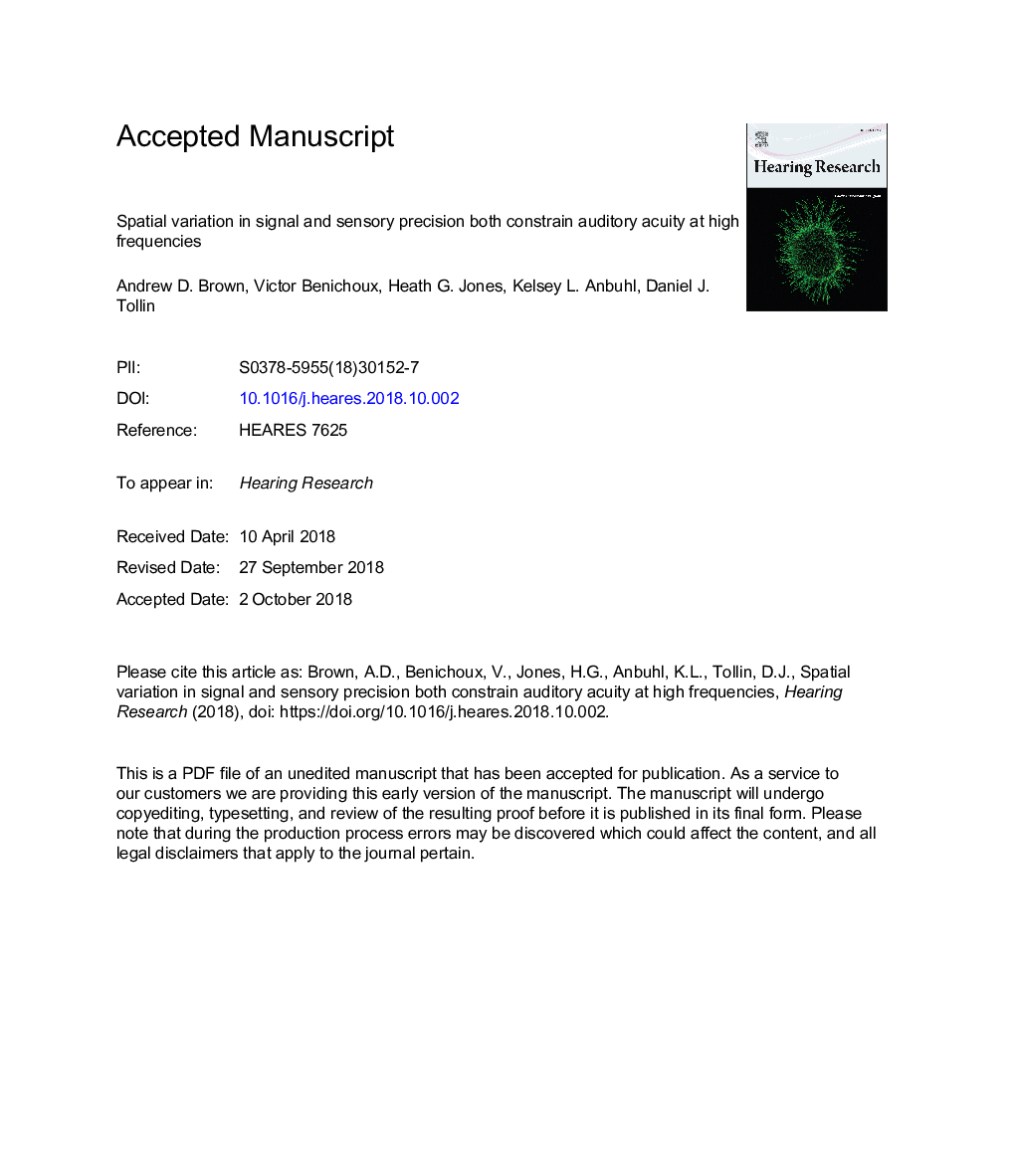| Article ID | Journal | Published Year | Pages | File Type |
|---|---|---|---|---|
| 11263509 | Hearing Research | 2018 | 34 Pages |
Abstract
Sensory performance is constrained by the information in the stimulus and the precision of the involved sensory system(s). Auditory spatial acuity is robust across a broad range of sound frequencies and source locations, but declines at eccentric lateral angles. The basis of such variation is not fully understood. Low-frequency auditory spatial acuity is mediated by sensitivity to interaural time difference (ITD) cues. While low-frequency spatial acuity varies across azimuth and some physiological models predict strong medial bias in the precision of ITD sensitivity, human psychophysical ITD sensitivity appears to vary only slightly with reference ITD magnitude. Correspondingly, recent analyses suggest that spatial variation in human low-frequency acuity is well-accounted for by acoustic factors alone. Here we examine the matter of high-frequency auditory acuity, which is mediated by sensitivity to interaural level difference (ILD) cues. Using two different psychophysical tasks in human subjects, we demonstrate decreasing ILD acuity with increasing ILD magnitude. We then demonstrate that the multiplicative combination of spatially variant sensory precision and physical cue information (local slope of the ILD cue) provides improved prediction of classic high-frequency spatial acuity data. Finally, we consider correlates of magnitude dependent acuity in neurons that are sensitive to ILDs.
Related Topics
Life Sciences
Neuroscience
Sensory Systems
Authors
Andrew D. Brown, Victor Benichoux, Heath G. Jones, Kelsey L. Anbuhl, Daniel J. Tollin,
